Abstract
1. Polyphenol oxidase (EC 1. 10. 3.–) from the shoots of the tea plant was purified about 5000-fold on a dry-weight basis. 2. At an intermediate stage of purification four soluble yellow fractions were obtained. They are believed to represent complexes of a basic enzyme protein with acidic phenolic oxidation products and nucleic acids. After removal of the complex-forming materials the fractions were blue and similar to each other. About 40% of the activity could not be extracted from the acetone-dried powder. 3. Each of the four blue fractions was resolved further into two species, A and B. The following results refer to species A. 4. The enzyme showed absorption maxima at 279mμ (E1%1cm., 13·5) and 611mμ (E1%1cm., 0·84) with a shoulder at 330mμ. The enzyme was bleached by substrate under anaerobic conditions and the colour was restored by oxygen. 5. The molecular weight measured by sedimentation and diffusion was 144000±16000. The copper content was 0·32% (w/w). 6. Kinetic constants are given for a number of substrates and inhibitors, including the natural substrates of the tea leaf. The specific activity towards pyrogallol was 373 units/mg. at 30°. 7. The best substrates were o-dihydric phenols. Quinol and p-phenylenediamine were slowly oxidized. Monohydric phenols and ascorbic acid were not oxidized. 8. The kinetics of oxidation of most substrates are consistent with a mechanism in which oxidized and reduced forms of the enzyme form binary complexes with phenol and oxygen respectively. A modified mechanism is postulated for the oxidation of chlorogenic acid. 9. The relation of the results to the mechanism of tea fermentation is discussed.
Full text
PDF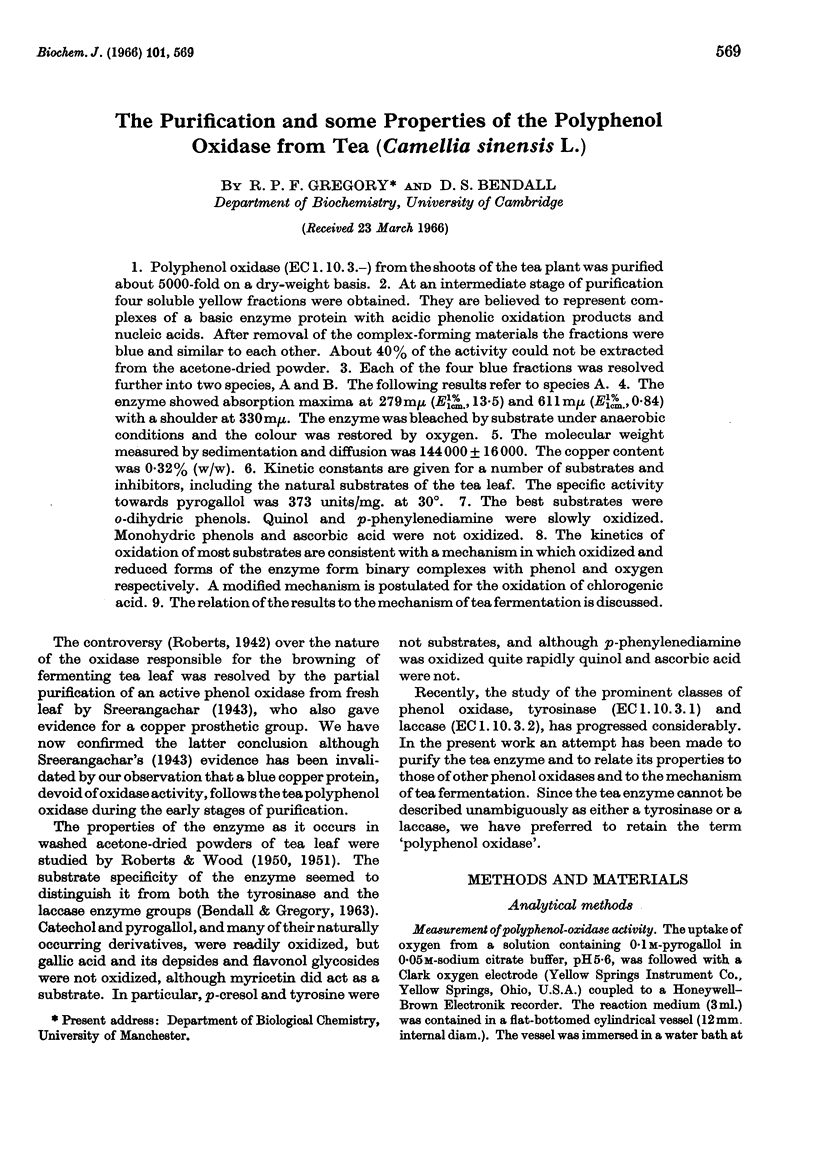
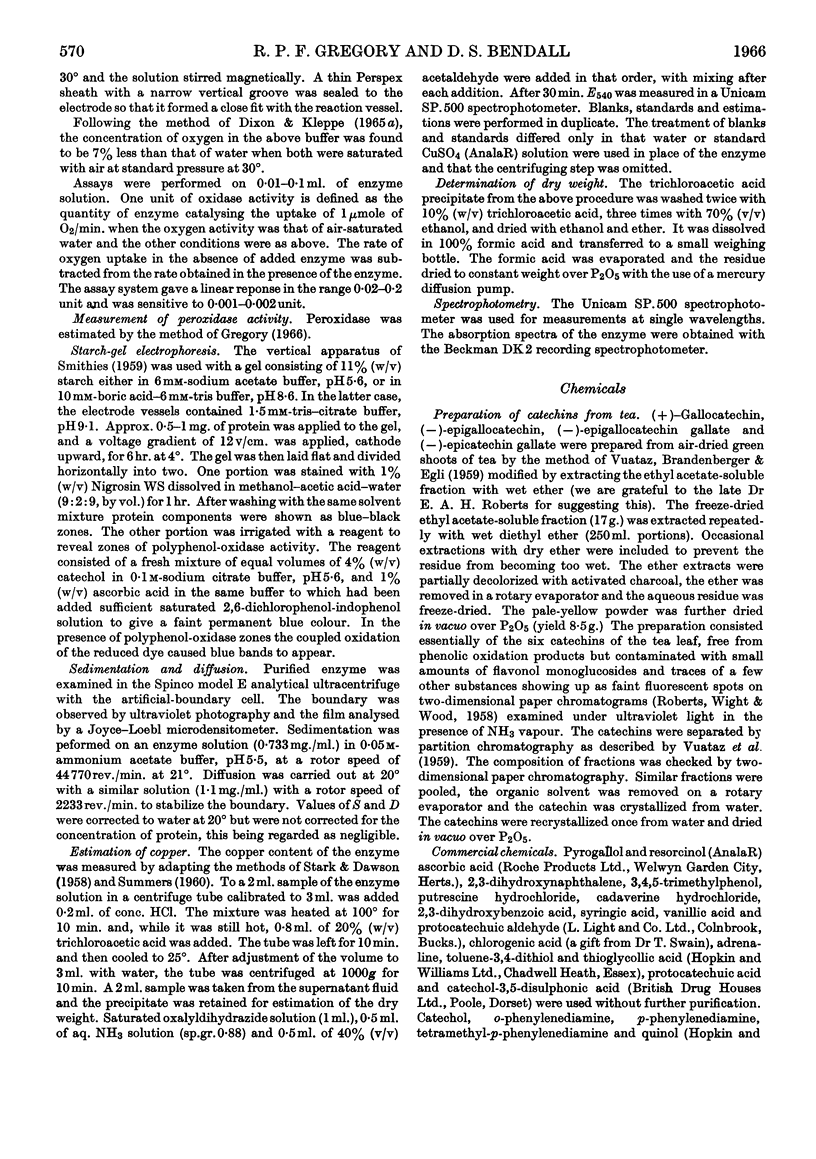
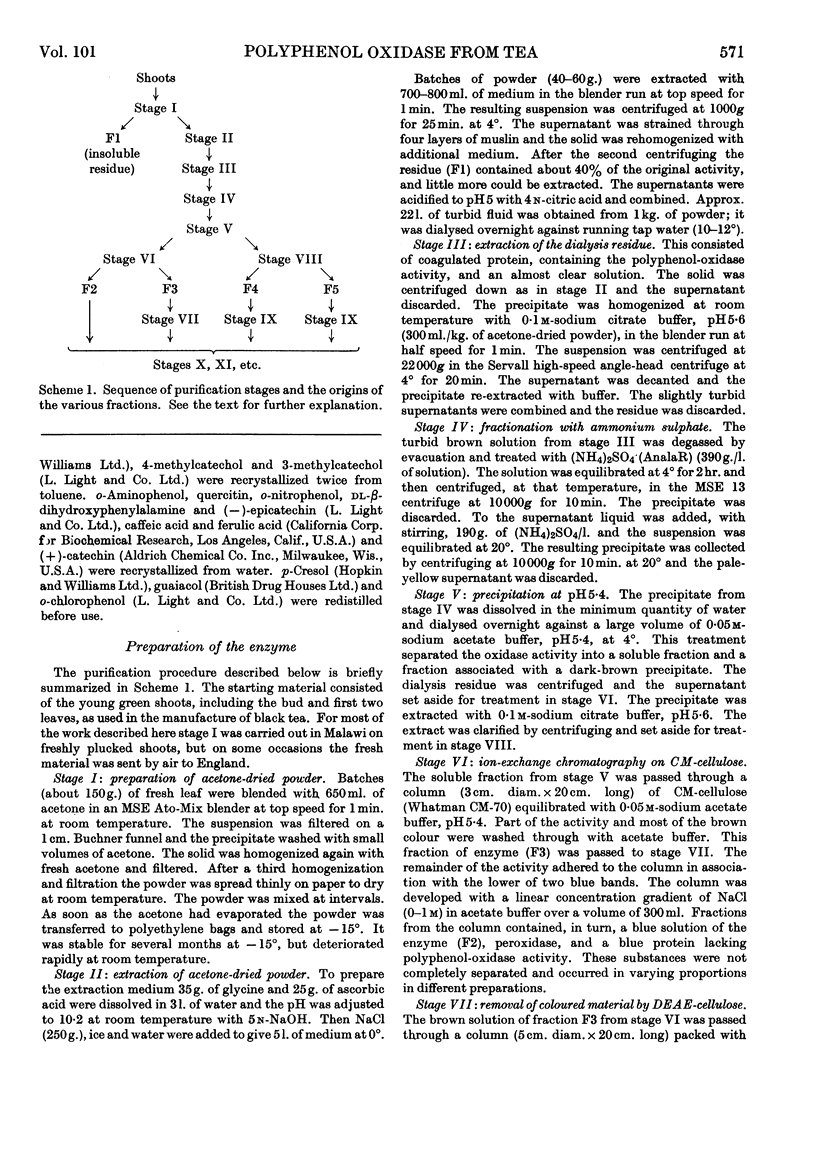
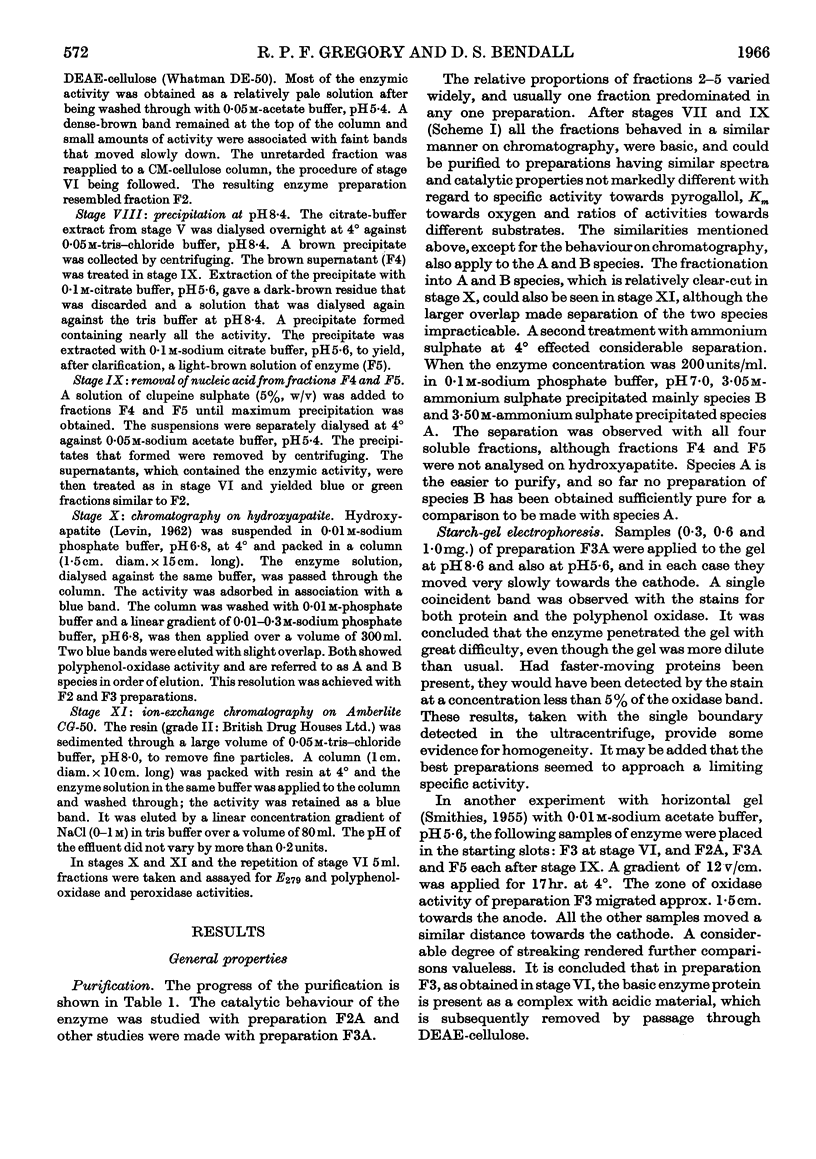
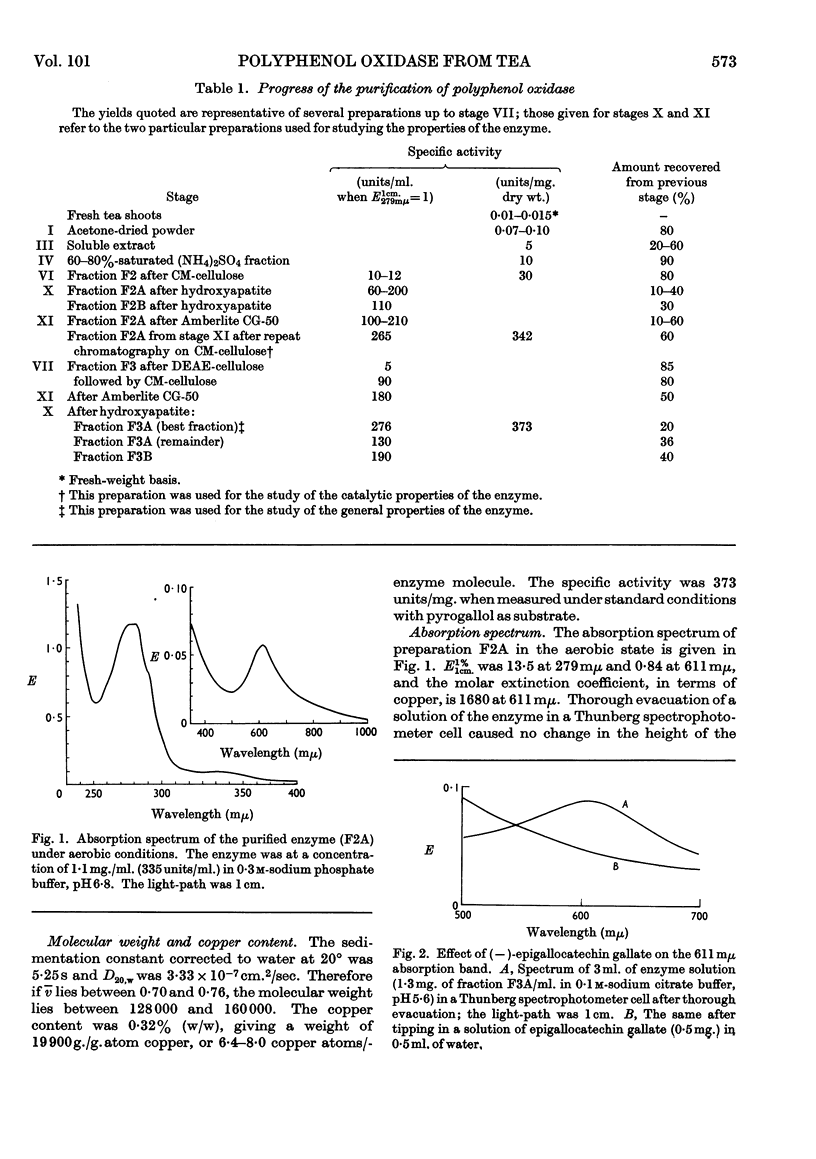
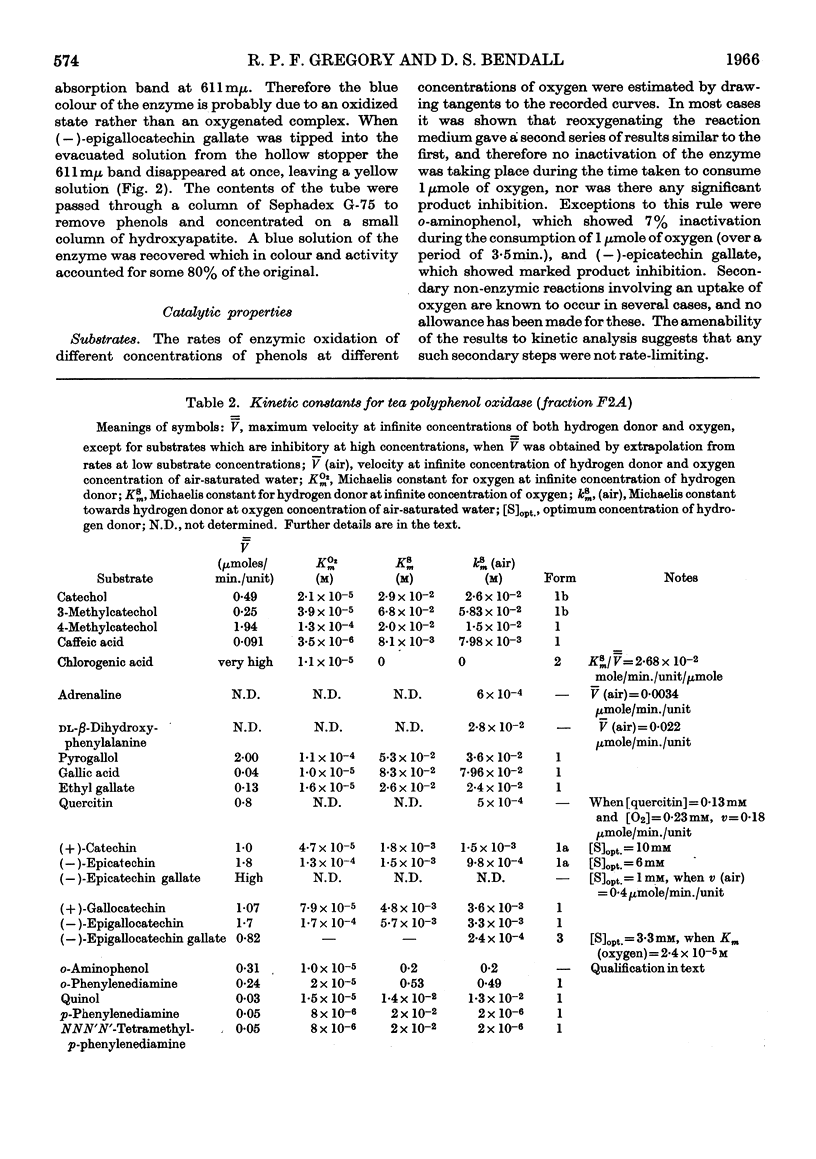
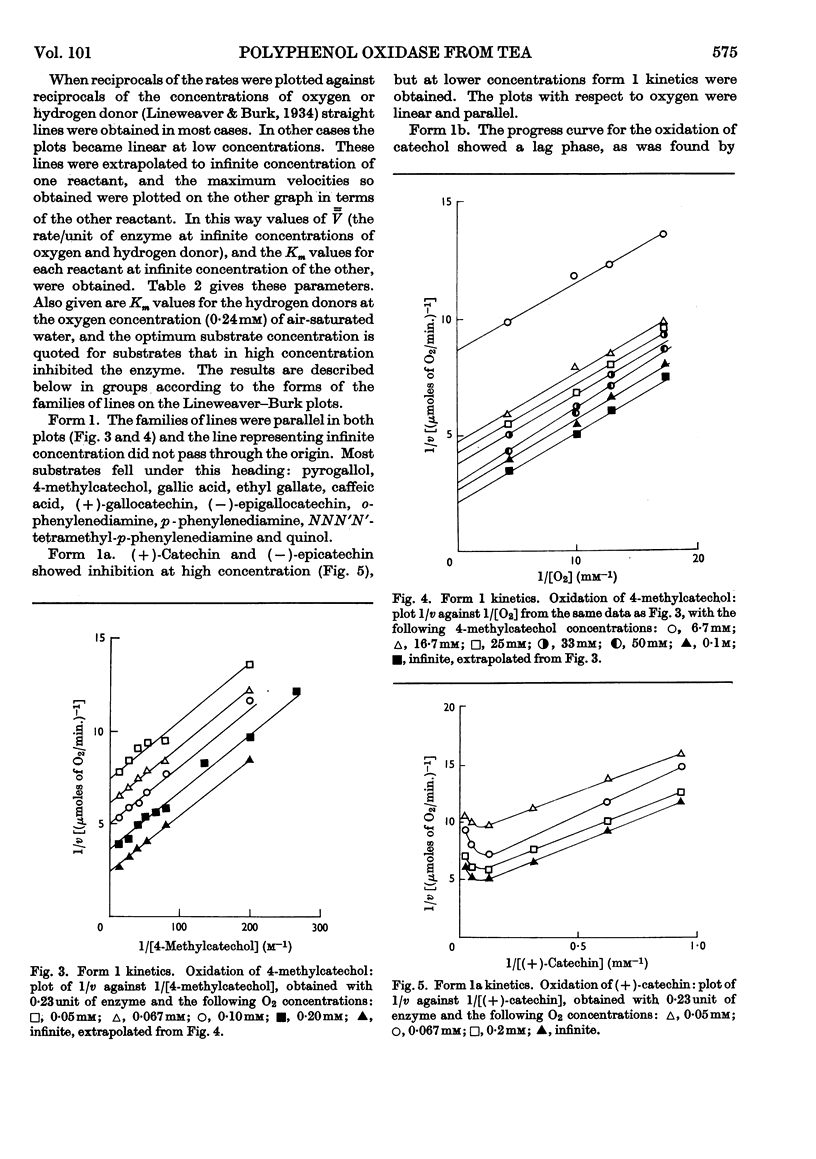
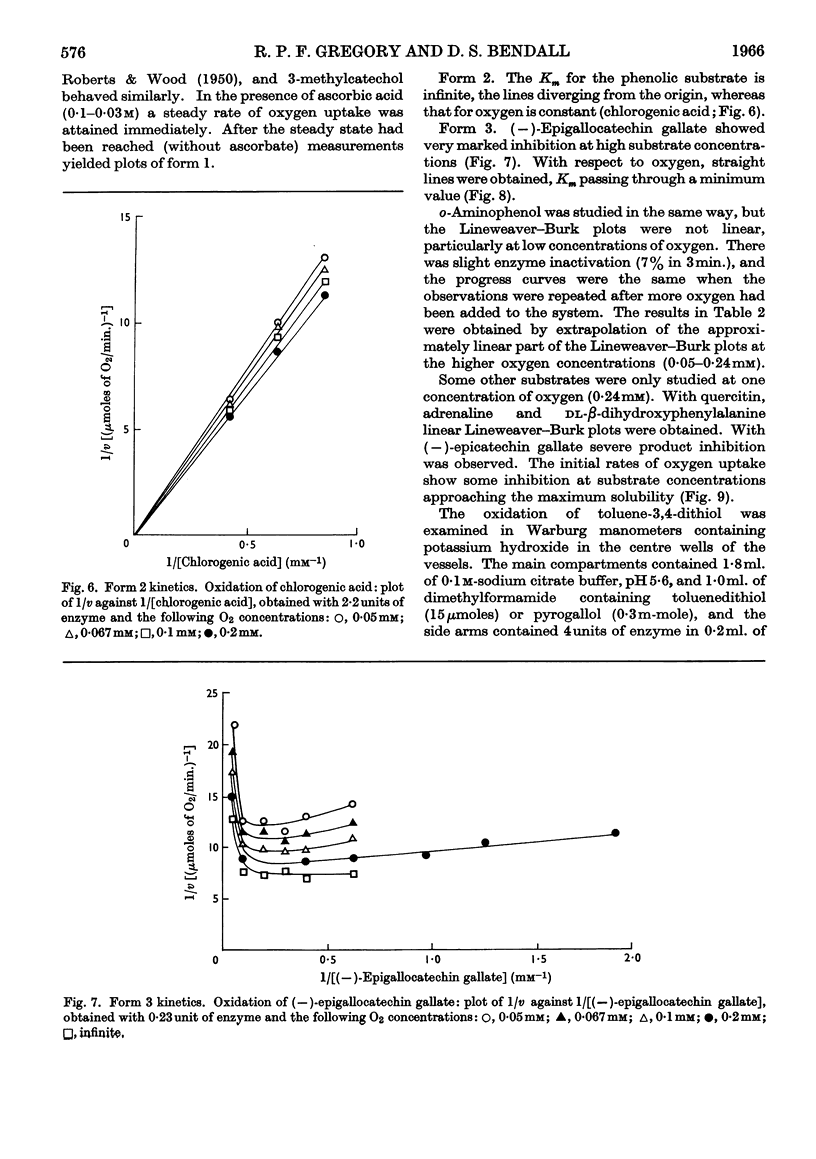
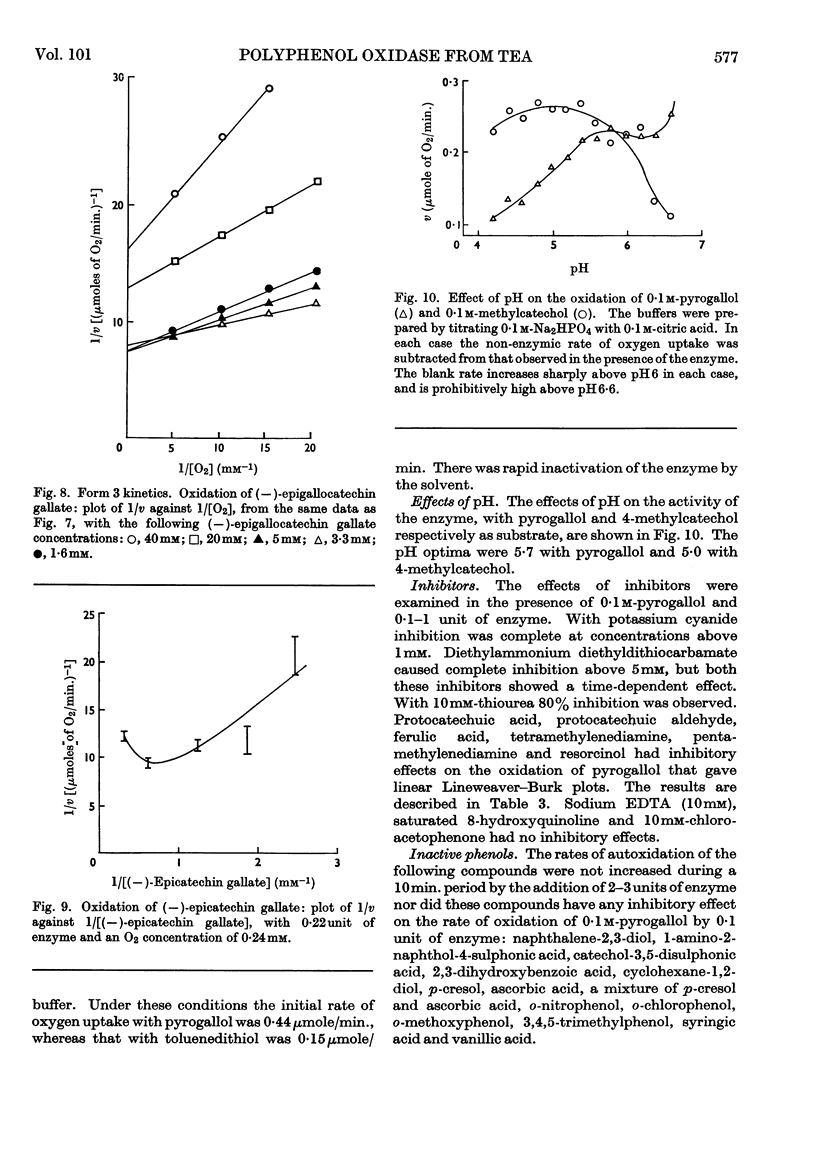
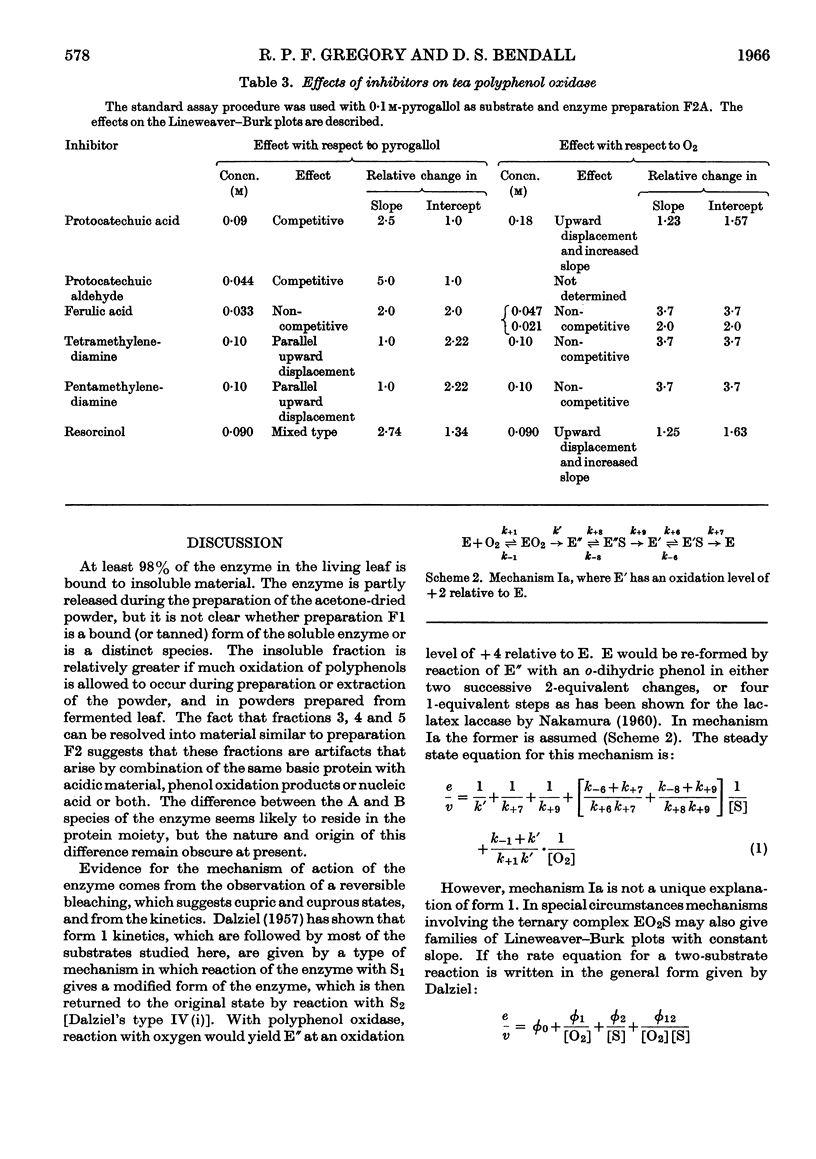
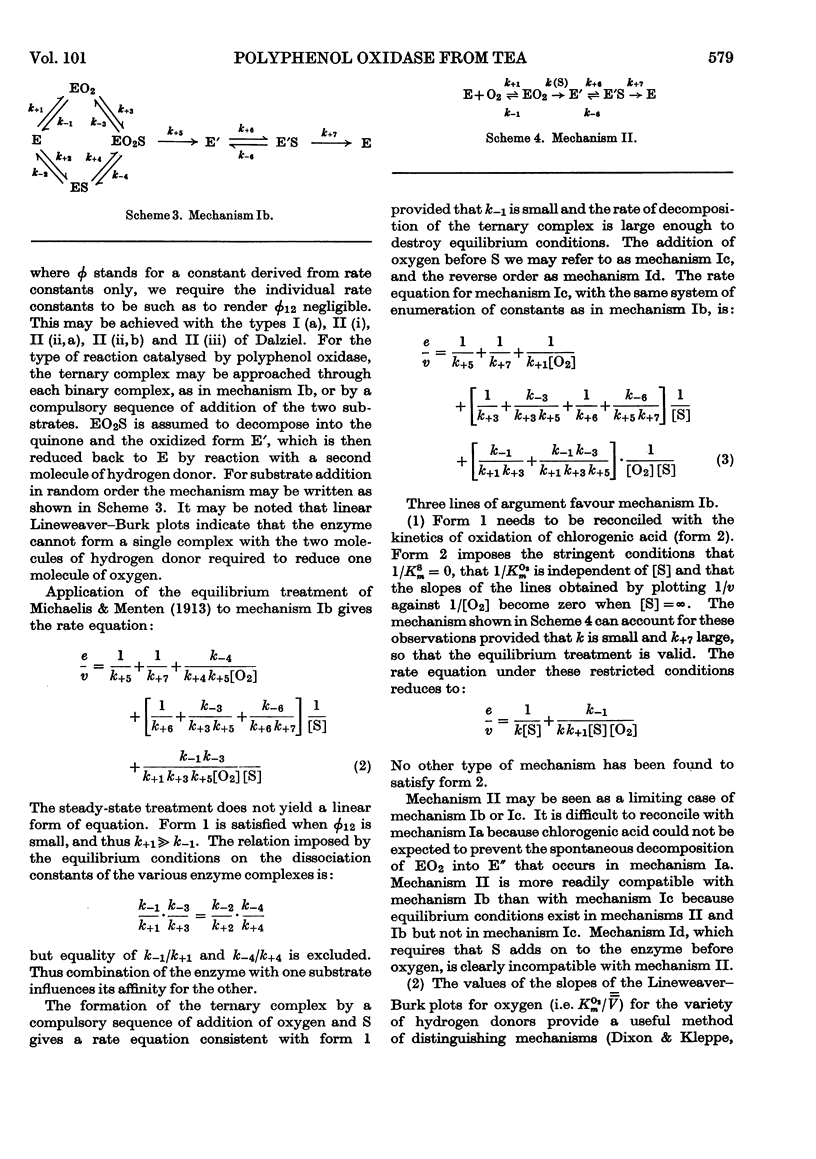
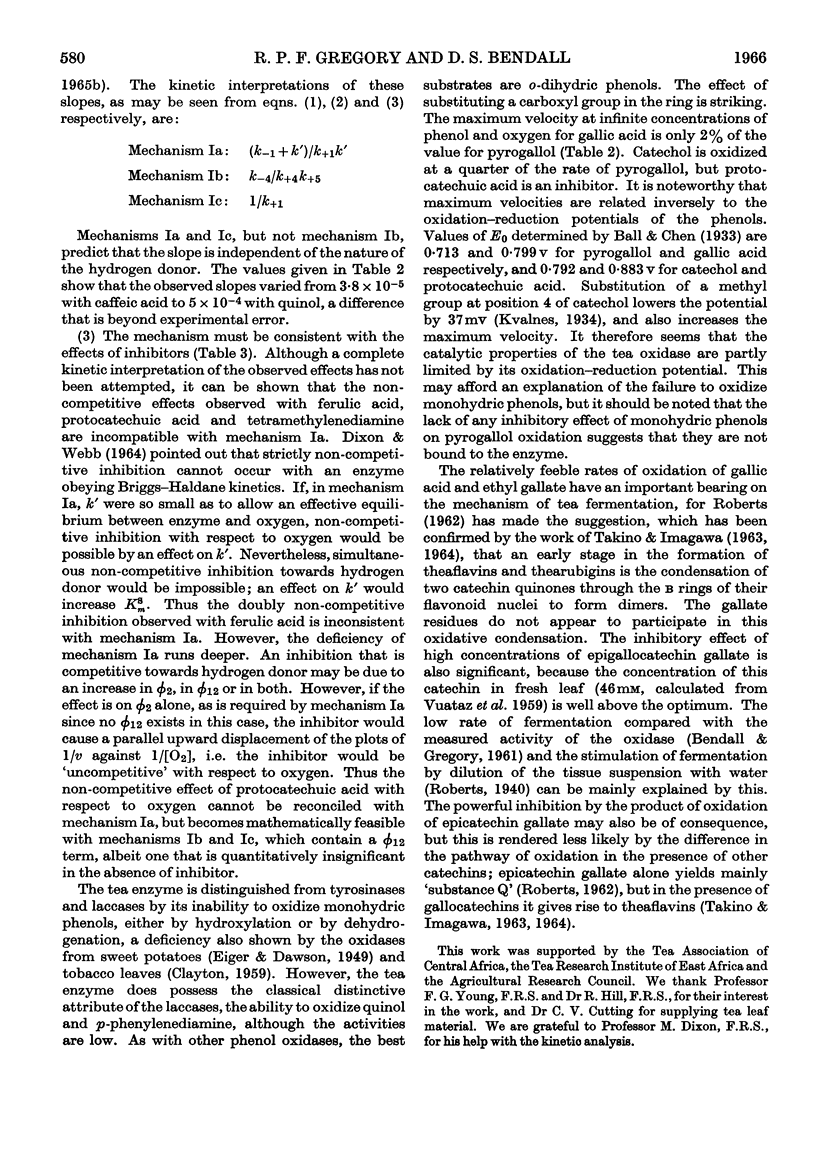
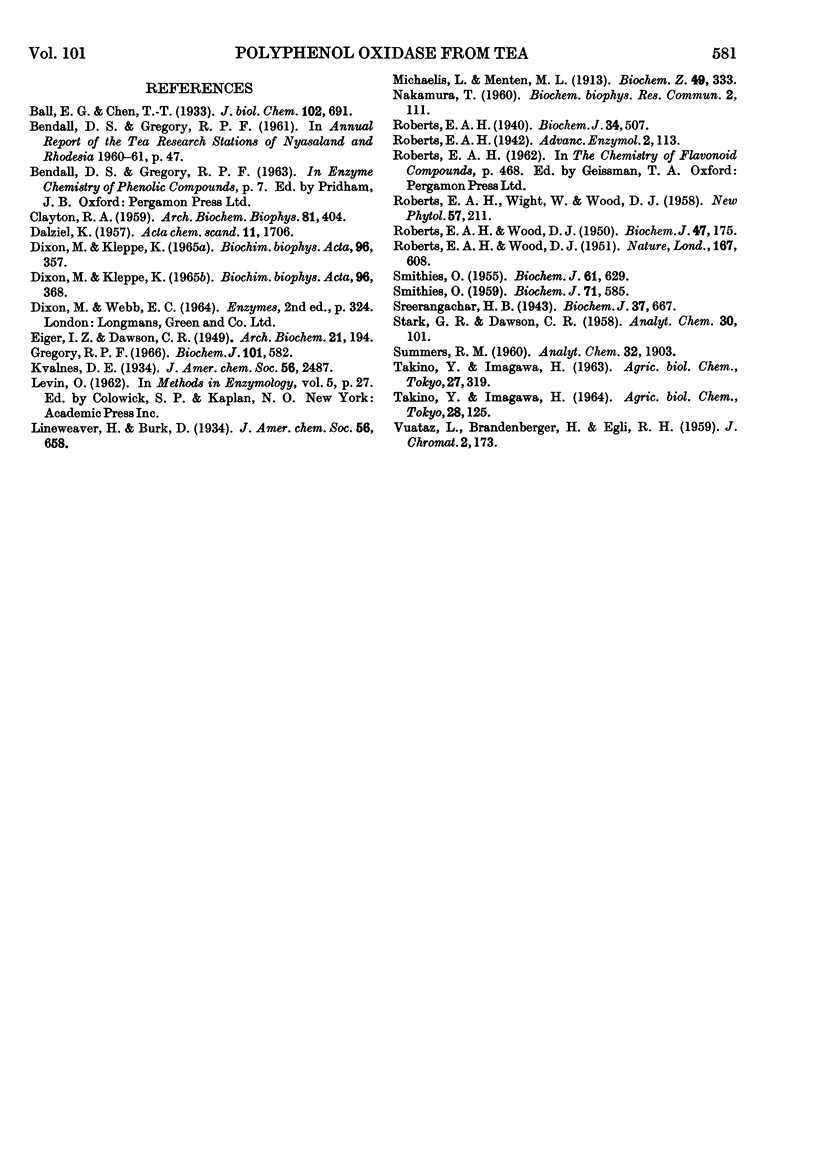
Selected References
These references are in PubMed. This may not be the complete list of references from this article.
- CLAYTON R. A. Properties of tobacco polyphenol oxidase. Arch Biochem Biophys. 1959 Apr;81(2):404–417. doi: 10.1016/0003-9861(59)90219-x. [DOI] [PubMed] [Google Scholar]
- DIXON M., KLEPPE K. D-AMINO ACID OXIDASE. I. DISSOCIATION AND RECOMBINATION OF THE HOLOENZYME. Biochim Biophys Acta. 1965 Mar 22;96:357–367. doi: 10.1016/0005-2787(65)90556-3. [DOI] [PubMed] [Google Scholar]
- Gregory R. P. A rapid assay for peroxidase activity. Biochem J. 1966 Dec;101(3):582–583. doi: 10.1042/bj1010582. [DOI] [PMC free article] [PubMed] [Google Scholar]
- ROBERTS E. A. H., WOOD D. J. Oxidation of anthoxanthins by tea-oxidase. Nature. 1951 Apr 14;167(4250):608–608. doi: 10.1038/167608a0. [DOI] [PubMed] [Google Scholar]
- ROBERTS E. A. H., WOOD D. J. The fermentation process in tea manufacture; oxidation of substrates by tea oxidase. Biochem J. 1950 Aug;47(2):175–186. doi: 10.1042/bj0470175. [DOI] [PMC free article] [PubMed] [Google Scholar]
- SMITHIES O. An improved procedure for starch-gel electrophoresis: further variations in the serum proteins of normal individuals. Biochem J. 1959 Mar;71(3):585–587. doi: 10.1042/bj0710585. [DOI] [PMC free article] [PubMed] [Google Scholar]
- SMITHIES O. Zone electrophoresis in starch gels: group variations in the serum proteins of normal human adults. Biochem J. 1955 Dec;61(4):629–641. doi: 10.1042/bj0610629. [DOI] [PMC free article] [PubMed] [Google Scholar]
- Sreerangachar H. B. Studies on the ;fermentation' of Ceylon tea: 6. The nature of the tea-oxidase system. Biochem J. 1943;37(6):661–667. doi: 10.1042/bj0370661. [DOI] [PMC free article] [PubMed] [Google Scholar]


